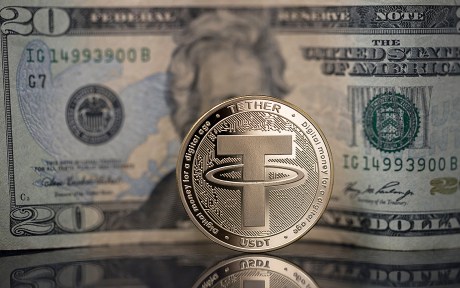
In the rapidly evolving landscape of digital finance, stablecoins are increasingly carving out their niche as a reliable digital asset class. As the cryptocurrency market continues to be characterized by significant volatility, stablecoins offer a point of stability, pegged to traditional currencies like the US dollar. This article explores the burgeoning role of stablecoins in the cryptocurrency ecosystem, the implications for investors, and the challenges posed by current regulatory landscapes.

The Rise of Stablecoins
Stablecoins are digital currencies designed to maintain a stable value by being pegged to a reserve of assets. The most common form is fiat-collateralized stablecoins, where each coin is backed 1:1 by a fiat currency, such as the US dollar. This structure allows stablecoins to act as a bridge between volatile cryptocurrencies and the more stable traditional financial system.
The appeal of stablecoins lies in their ability to provide the benefits of cryptocurrency—such as fast transactions and privacy—while minimizing the risk of price fluctuations. This dual benefit makes them an attractive option not only for traders seeking a stable store of value but also for those engaging in decentralized finance (DeFi) applications where value stability is crucial.
Market Dynamics and Investor Implications
According to CoinMarketCap, the stablecoin market has surged past $200 billion in value, a testament to their growing acceptance and utility. This growth trajectory underscores the increasing integration of stablecoins into various sectors of the economy, from remittances to cross-border transactions and even everyday payments.
For investors, stablecoins offer a way to mitigate risk in a volatile market. Unlike traditional cryptocurrencies like Bitcoin or Ethereum, whose values can swing dramatically, stablecoins provide a more predictable investment vehicle. As such, they can serve as a hedge against market downturns or as a means to remain invested in the crypto space without exposure to typical volatile price movements.
Regulatory Landscape
The rise of stablecoins has not gone unnoticed by regulators. Governments and financial authorities worldwide are grappling with how to regulate these digital assets effectively. The European Central Bank has highlighted potential risks if stablecoins are not adequately supervised, warning that the unchecked growth of digital assets could trigger financial instability.
In the United States, the Securities and Exchange Commission (SEC) and other regulatory bodies are considering frameworks to ensure stablecoins are backed by adequate reserves and operate transparently. The Genius Act, recently discussed in the Senate Banking Committee, aims to create a clear regulatory structure for stablecoins, addressing concerns over consumer protection and financial transparency.

Challenges and Future Prospects
Despite their advantages, stablecoins face several challenges. Ensuring transparency in reserve holdings is a critical issue. Investors and regulators alike demand proof that each stablecoin is backed by equivalent reserves, a requirement that some issuers have struggled to meet convincingly.
Moreover, the integration of stablecoins into traditional financial systems raises cybersecurity concerns. As PYMNTS reports, without robust cybersecurity measures, the adoption of stablecoins can expose financial systems to new vulnerabilities, necessitating enhanced security protocols and regulatory oversight.
Conclusion
The rise of stablecoins marks a significant evolution in the cryptocurrency landscape. As digital assets continue to integrate into mainstream financial systems, stablecoins offer a unique proposition: the benefits of digital currencies without the volatility. For investors, they represent both an opportunity and a challenge—a stable investment vehicle that requires careful scrutiny regarding regulatory compliance and reserve transparency.
As stablecoins continue to gain traction, they are poised to play a pivotal role in the broader adoption of digital currencies for everyday transactions, potentially transforming the global financial ecosystem. However, the path forward will require navigating complex regulatory environments and addressing inherent challenges in transparency and security.

In summary, as stablecoins blossom within the digital financial landscape, they offer a promising avenue for investors seeking stability amidst the shifting sands of the cryptocurrency market. However, the journey toward widespread acceptance and regulation will be equally critical in determining their long-term impact on global finance.